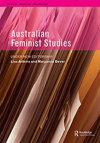The Live Witness in the Archive: Analysing Live Witness Testimony in the South African Truth and Reconciliation Commission’s Archival Project
IF 1.3
4区 社会学
Q2 WOMENS STUDIES
引用次数: 3
Abstract
ABSTRACT While widely studied, the South African Truth and Reconciliation Commission produced an archive that still calls for deeper scholarly engagement. Its archive calls to mind Eric Ketelaar’s (2000, “Archivistics Research Saving the Profession.” American Archivist 63 (2): 322–340; 2001. “Tacit Narratives: The Meanings of Archives.” Archival Science 1 (2): 131–141) concept of archivalisation which is concerned with how things are considered archive worthy and subsequently how the archive is accessed and what is extracted. This article offers an in-depth analysis of one witness testimony, that of Mrs Bessie Mdoda, to make a case for taking seriously the ‘liveness’ of witness testimony to the commission's archival ideal. While the TRC archive is replete with errors in interpretation, transcription and translation and omits many of the commission’s processes, materials and bureaucracy from its record, it still contains enough for scholars to listen to what is there. Via the analysis of one oral narrative, I argue that when closely read in context and with awareness of difference, witness testimony may challenge many of the prevailing assumptions about how people interacted with the commission as witnesses, especially black women. Using one woman’s testimony, I point to the possibilities of going beyond archivalisation and suggest that the TRC archive requires an ethical and engaged user who pays attention to the liveness of the testimony and bears witness by closely reading the given narratives within their immediate and historical context.档案中的现场证人:分析南非真相与和解委员会档案项目中的现场证人证词
在被广泛研究的同时,南非真相与和解委员会(South African Truth and Reconciliation Commission)制作了一份档案,仍需要更深入的学术参与。它的档案让人想起Eric Ketelaar(2000)的《档案研究拯救职业》。美国档案学家63 (2):322-340;2001. “隐性叙事:档案的意义”。档案科学1(2):131-141)存档的概念,它关注的是如何认为事物具有存档价值,以及随后如何访问档案以及提取什么。本文对贝西·姆多达夫人的证词进行了深入分析,以证明认真对待证人证词的“活力”对委员会档案理想的重要性。虽然TRC的档案在解释、抄写和翻译方面充满了错误,并且从记录中省略了许多委员会的流程、材料和官僚作风,但它仍然包含了足够的内容,让学者们听听那里有什么。通过对一个口头叙述的分析,我认为,如果在上下文中仔细阅读并意识到差异,证人证词可能会挑战许多关于人们如何作为证人与委员会互动的主流假设,尤其是黑人妇女。我以一位妇女的证词为例,指出了超越档案化的可能性,并建议TRC档案需要一个有道德和积极参与的用户,他关注证词的活力,并通过在其当前和历史背景下仔细阅读给定的叙述来作证。
本文章由计算机程序翻译,如有差异,请以英文原文为准。
求助全文
约1分钟内获得全文
求助全文
来源期刊

Australian Feminist Studies
WOMENS STUDIES-
CiteScore
2.50
自引率
0.00%
发文量
7
期刊介绍:
Australian Feminist Studies was launched in the summer of 1985 by the Research Centre for Women"s Studies at the University of Adelaide. During the subsequent two decades it has become a leading journal of feminist studies. As an international, peer-reviewed journal, Australian Feminist Studies is proud to sustain a clear political commitment to feminist teaching, research and scholarship. The journal publishes articles of the highest calibre from all around the world, that contribute to current developments and issues across a spectrum of feminisms.
 求助内容:
求助内容: 应助结果提醒方式:
应助结果提醒方式:


